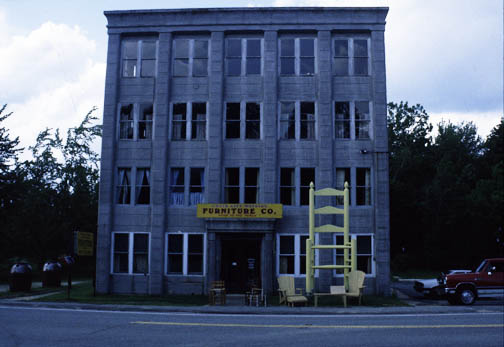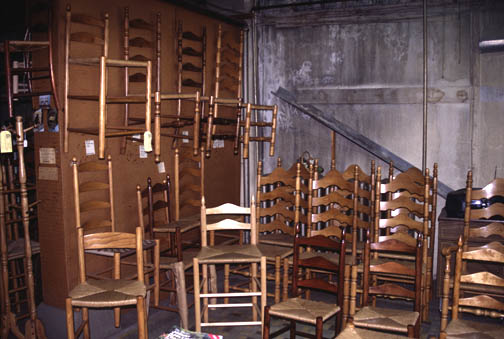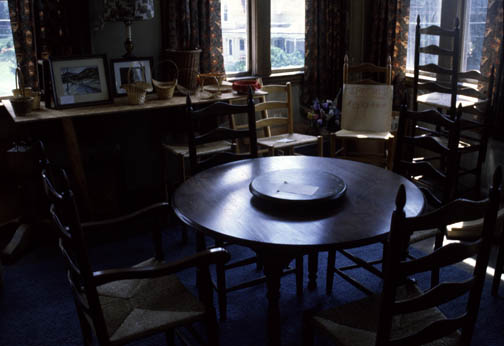
Today’s Boston Globe paints a less than promising picture of the state of furniture making in Gardner. Nicknamed “Chair City,” many of the large furniture companies have closed down, leaving Gardner without its core industry which once was such a sense of pride. One of the oldtimers still weaving rush seats on ladder back chairs is Len Curcio. He owns Wayside Furniture, a company founded by his father over 60 years ago.
Back in 2000, folklorist Tom Carroll did some field research in Worcester County for us, including a visit to Wayside Furniture to meet with Len Curcio. He saw Curcio’s work as a continuation of the very significant chair and furniture making industry of Gardner and the surrounding area. In contrast to some of the larger scale facilities that once existed in town, Wayside still maintains a hand crafted element in their production processes.
I
In creating the woven rush seat, Len Curcio works by wrapping a length of fiber around a shuttle, then passing through the opening where the chair seat will be. Keeping “equal pressure, equal pull” is key. “You have to have an affinity for it, cause it’s rough on your hands,” Mr. Curcio told Tom. “It’s the center part I’m looking at. The hole, not the weave.”

The involves passing the shuttle under the open seat and forming an “X” by applying material to each corner and gradually building the corner out toward the center. After every other pass, Mr. Curcio uses a metal wrench, or iron, to tighten the weave against the corners. Once the weave is completed, Curcio uses the “stuffer,” an elongated wooden implement, to pack newspaper strips into the bottom of the weave. “A chair is a total paper product,” Mr. Curcio explained. Once the stuffing process is completed, he uses the buffer to rub the finished weave to crea a smooth, relatively even surface.

Photos by Tom Carroll, 2000.
